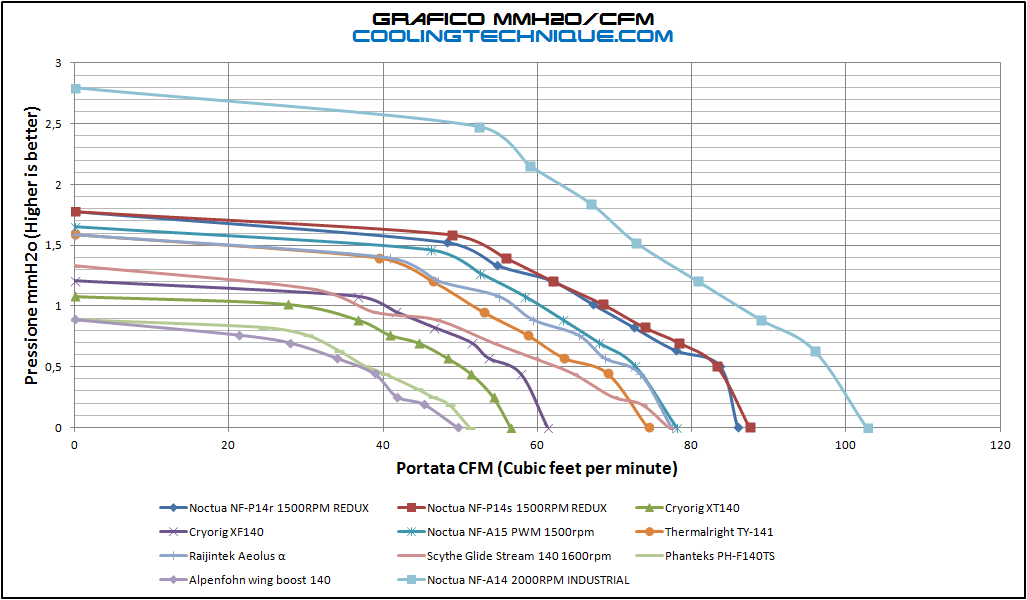Hello,
I'm in a process of buying some case fans and im looking at comparisons, spec sheets. The no-brainer choice would be picking something from Noctua stable, because anytime someone asks for fans people recommend them.
But the thing is, i started looking into spec sheets and for example, the flagship NF-A14 PWM:
- 82.4 CFM and 2.08 mmH2O static pressure
The next to flagship, a stripped down REDUX version:
- 78.69 CFM and 1.91 mmH2O static pressure
Now lets compare it with other fans, for example NZXT Aer P that come with X62 cooling and people keep saying they are bad and had to be replaced
- 98.17 CFM and 2.71 mmH2O static pressure
There are few other fans, that are usually cheaper but give better results either on in both airflow and pressure. So it gets me asking, is there other reason why people like to pick Noctua, beside the brand recognition? Are they picking it purely because Noctua is more quiet (because it is according to spec sheets)?
I'm in a process of buying some case fans and im looking at comparisons, spec sheets. The no-brainer choice would be picking something from Noctua stable, because anytime someone asks for fans people recommend them.
But the thing is, i started looking into spec sheets and for example, the flagship NF-A14 PWM:
- 82.4 CFM and 2.08 mmH2O static pressure
The next to flagship, a stripped down REDUX version:
- 78.69 CFM and 1.91 mmH2O static pressure
Now lets compare it with other fans, for example NZXT Aer P that come with X62 cooling and people keep saying they are bad and had to be replaced
- 98.17 CFM and 2.71 mmH2O static pressure
There are few other fans, that are usually cheaper but give better results either on in both airflow and pressure. So it gets me asking, is there other reason why people like to pick Noctua, beside the brand recognition? Are they picking it purely because Noctua is more quiet (because it is according to spec sheets)?





